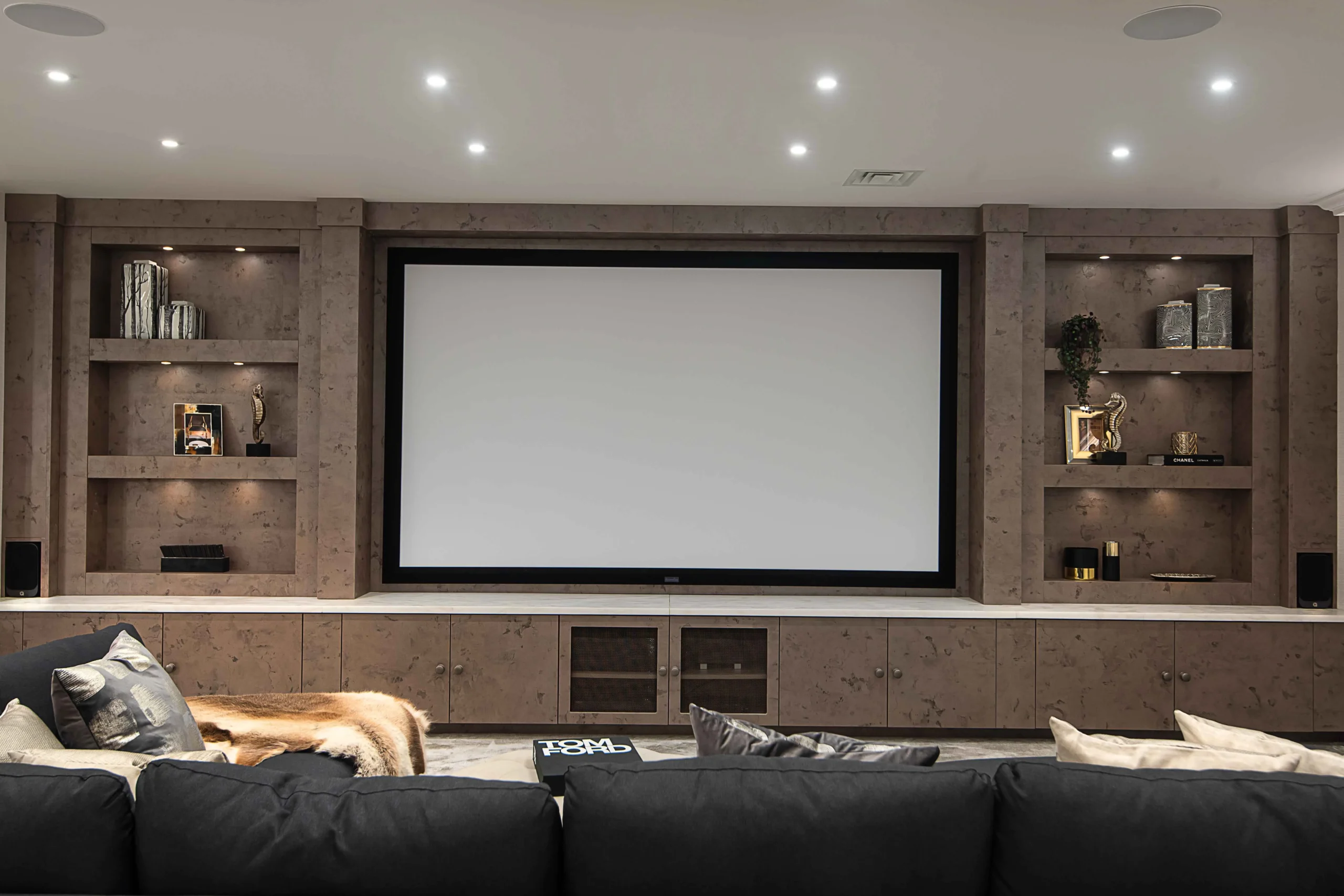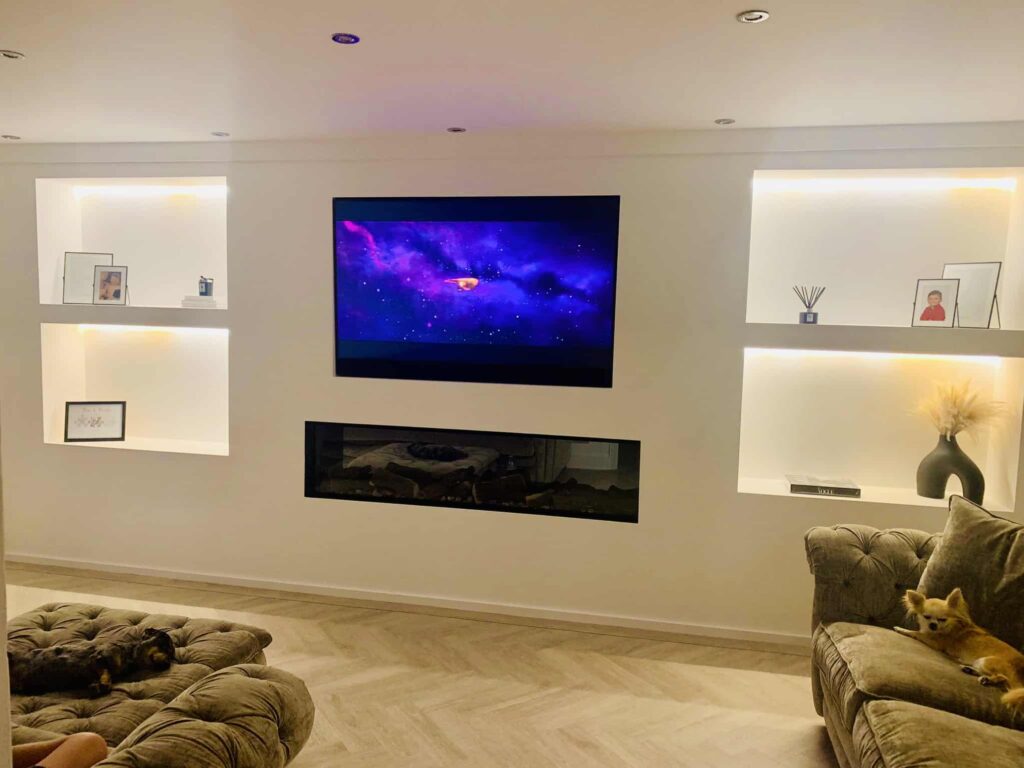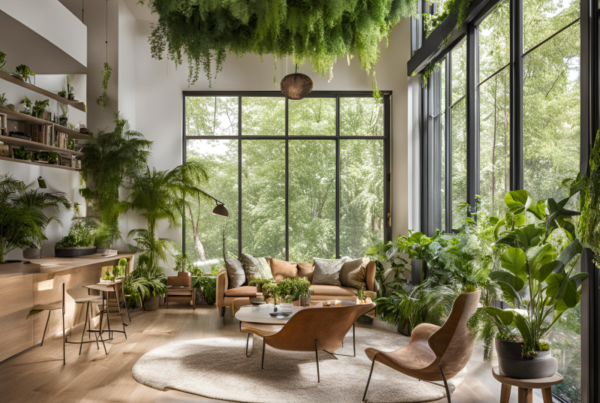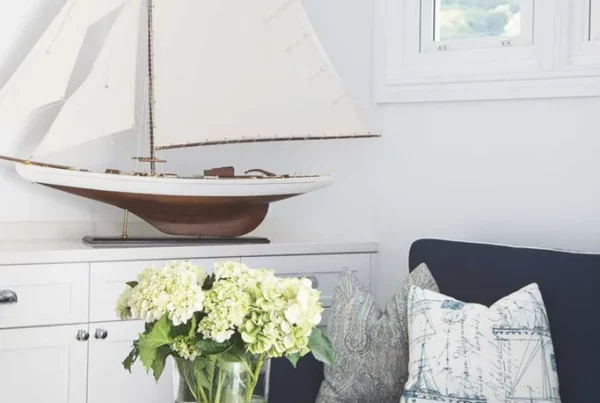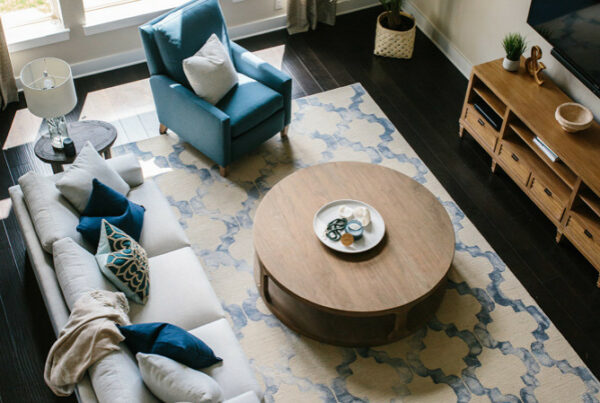In modern home design, the integration of smart technology and innovative layouts is essential for creating functional and aesthetically pleasing spaces. This article explores effective strategies for maximizing space while incorporating advanced technology, ensuring that your home not only meets practical needs but also reflects your personal style. By addressing common challenges like limited square footage and the desire for a cohesive home environment, we provide actionable insights that can help you transform your living spaces into welcoming, efficient areas without sacrificing comfort or design.
Table of Contents
Creating a Cohesive Design with Color and Texture
Designing a space that feels cohesive involves more than just choosing a few paint colors and decorative items; it requires a thoughtful approach that harmonizes color and texture. The right balance can transform any space, making it inviting and visually appealing. In this section, we will explore how to effectively integrate color and texture into your design, ensuring that your environment reflects your style while remaining coherent and stylish.
Understanding the Power of Color
Color plays a pivotal role in setting the mood of a room. Different colors evoke different feelings and can drastically alter perceptions of space. Here are some considerations to keep in mind when selecting colors:
- Warm vs. Cool Colors: Warm colors such as reds, oranges, and yellows can create a cozy, inviting atmosphere, perfect for living areas. In contrast, cool colors like blues and greens tend to be more calming and can enhance tranquility in spaces like bedrooms or bathrooms.
- Color Harmony: Understanding color theory can lead to better choices in the palette. Using complementary colors (those on the opposite sides of the color wheel) creates vibrant contrasts, while analogous colors (those next to each other on the wheel) yield a more serene look.
- Accent Colors: Incorporating accent colors through decor pieces, throw pillows, or artwork can add visual interest and break the monotony of neutral spaces. Select a bold accent color that ties the entire room together.
Incorporating Texture for Depth
Just as color dictates the mood of your space, texture adds depth and dimension. A combination of various textures can create a dynamic and inviting area. Consider the following textures:
- Soft Textiles: Fabrics like velvet, linen, and cotton can soften a room, making it feel more comfortable. Layering different fabrics—such as cushions, throws, and rugs—can introduce a tactile element that encourages touch and interaction.
- Hard Surfaces: Integrating materials like wood, metal, glass, and stone can provide contrast to softer elements, establishing a robust foundation for your design. These materials can be included in furniture, flooring, or decorative accents, enhancing durability and aesthetic appeal.
- Natural Elements: Incorporating natural textures, such as plants and organic decor, can enhance a space’s warmth and liveliness. Greenery not only adds a splash of color but also promotes a sense of well-being.
Balancing Color and Texture
Achieving a balance between color and texture is crucial for a cohesive design. Here are a few strategies:
- Establish a Focal Point: Choose a statement piece, like a bold-colored sofa or a textured rug, to draw attention. Build around this focal point, ensuring other elements complement rather than clash with it.
- Layering Techniques: Layer textures and colors to create a rich, inviting space. Start with a neutral base, then add layers of color and texture through decor, textiles, and wall treatments.
- Consistent Theme: Ensure that colors and textures reflect a unified theme or style throughout your space. Whether it’s modern minimalism or boho chic, maintaining consistency will enhance overall coherence.

Consulting Design Resources
To further enhance your understanding and execution of color and texture in home design, consider consulting reputable design resources. The House Beautiful website offers a wealth of knowledge on interior design trends, color palettes, and effective use of texture.
By embracing the nuances of color and texture, you will create a cohesive design that not only reflects your personal style but also provides comfort and harmony in your living spaces.
Incorporating Smart Technology for a Modern Touch
In today’s fast-paced world, integrating smart technology into our living spaces has become not just a luxury, but a necessity. Embracing smart technology offers a sleek, modern touch to any home, enhancing convenience and providing innovative solutions to everyday challenges. However, in incorporating these technologies, it’s essential to maintain a balance between functionality and aesthetic appeal.
Understanding Smart Home Systems
A smart home system connects various devices in your home to a network, allowing for automation and remote control. This can include everything from security cameras and lighting systems to smart thermostats and appliances. Manufacturers have developed a plethora of smart devices that not only serve functional purposes but also complement your home design:
- Smart Lighting: Adjustable brightness and color options can create ambiance while being energy-efficient. Products like Philips Hue or LIFX can be programmed to suit your mood or activities throughout the day.
- Smart Thermostats: Devices such as the Nest Learning Thermostat optimize your home’s heating and cooling processes, learning your habits to ensure maximum efficiency. A well-regulated temperature contributes to overall comfort and can significantly reduce energy costs.
- Voice Assistants: Systems like Amazon Alexa and Google Assistant not only control smart devices but can also contribute to the organization of your day, from setting reminders to controlling your music playlists with simple voice commands.
Smart Security Solutions
The integration of smart security devices offers peace of mind for homeowners. Features such as video doorbells and smart locks allow for real-time monitoring and remote access. For example, the Ring Video Doorbell allows you to see and communicate with visitors from your smartphone, enhancing security without compromising the look of your entryway.
Moreover, systems like smart smoke detectors and security cameras can be seamlessly integrated into your home. Choosing devices that blend with your décor—such as sleek, unobtrusive designs—ensures the technology doesn’t disrupt your home’s aesthetic flow.
Enhancing Home Entertainment
Smart technology also revolutionizes the way we experience entertainment at home. Incorporating a home theater system with smart controls can transform your living space into a hub for leisure activities. Smart TVs from brands like Samsung and LG allow for easy streaming, and when combined with high-quality sound systems, they deliver an immersive experience.
Additionally, devices like smart speakers offer both functionality and style, able to blend into your décor while providing high-quality audio. The Apple HomePod is one example of a stylish gadget that seamlessly integrates with home technology while delivering superior sound quality.
Sustainable Living through Smart Innovations
Another significant advantage of incorporating smart technology is the opportunity to enhance sustainability. Home automation systems enable you to monitor and control your energy consumption more effectively. Smart outlets and energy monitors can provide insights into which devices use the most energy, allowing you to make informed adjustments that benefit both your wallet and the environment.
For instance, using devices that automatically switch off lights when no one is in the room or scheduling large appliances to run during off-peak hours can significantly lower your electricity bill. These smart decisions not only reflect modern living but also a commitment to sustainability.
Blending Design and Technology
Incorporating smart technology into your home’s design should always be a thoughtful process. It’s essential to choose devices that not only serve a practical purpose but also align with your aesthetic goals. Consider utilizing smart technology that can be concealed or integrated into existing furniture to maintain a clean look.
For example, hidden charging stations can be installed within desks or tables, while smart speakers can be placed strategically to enhance both function and style. Further, opting for wireless devices reduces cable clutter, making your modern touch seamless and sophisticated.
As you explore the various aspects of incorporating smart technology, you create not only a functional living space but also a home that reflects your personal style, innovative spirit, and appreciation for modern conveniences. In the next section, we’ll delve into maximizing space with innovative layouts that further complement your modern home.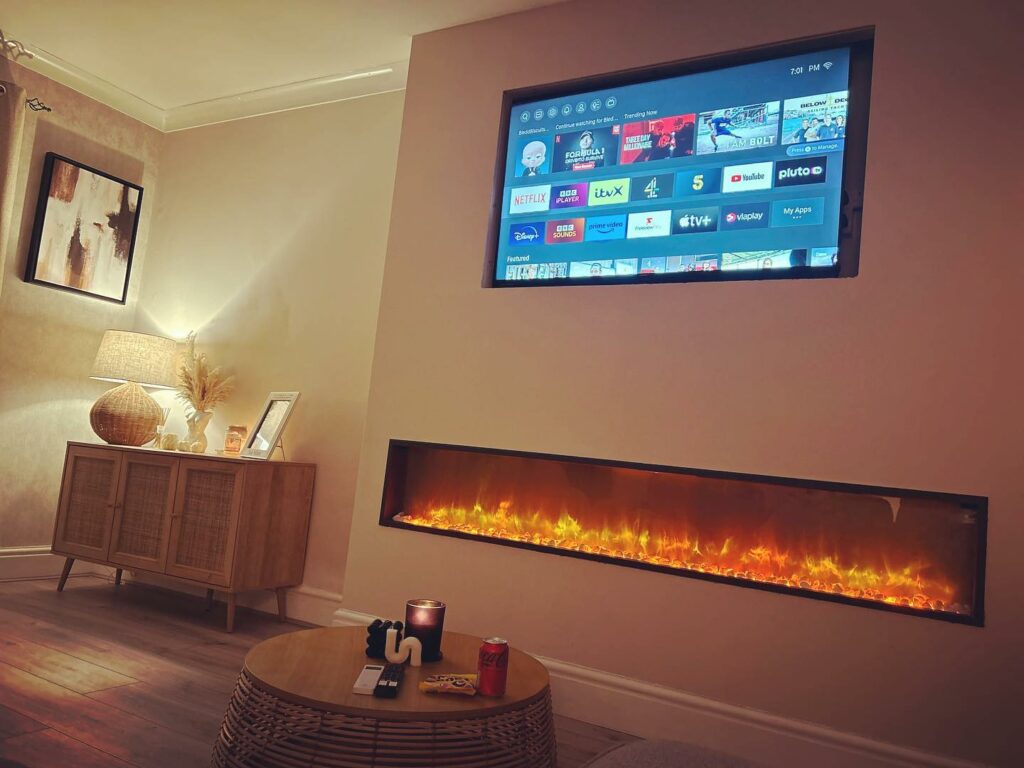
Maximizing Space with Innovative Layouts
When faced with limited square footage, maximizing space through innovative layouts becomes essential. The right arrangement not only enhances functionality but also elevates the aesthetic appeal of your home. Leveraging smart design solutions can transform cramped areas into inviting and practical living spaces. Here, we explore a variety of strategies and techniques to maximize your space without sacrificing style or comfort.
1. Open Floor Plans: Embracing Airiness
Open floor plans have surged in popularity for their ability to create a sense of spaciousness. By removing walls that separate the kitchen, living, and dining areas, you can foster a flow that feels expansive. This design choice is particularly advantageous in smaller homes or apartments, as it allows natural light to permeate the entire area.
Benefits of Open Floor Plans:
- Enhanced Natural Light: With fewer walls obstructing windows, sunlight can illuminate all areas, making them feel larger.
- Improved Social Interactions: Open spaces encourage interaction between family members and guests, making gatherings more enjoyable.
- Flexible Use of Space: You can rearrange furniture easily and adapt the space for various activities, from family meals to game nights.
2. Multi-Functional Furniture: Combining Utility with Style
Incorporating multi-functional furniture is another crucial strategy for maximizing space. These pieces serve double or even triple duty while contributing to the decor, helping you maintain a clean and organized living environment. For instance, consider a coffee table with built-in storage or a sofa that converts into a bed when guests arrive.
Popular Multi-Functional Furniture Options:
- Storage Ottomans: Perfect for hiding blankets or games while providing additional seating.
- Wall Beds: These disappear into the wall, freeing up floor space during the day.
- Expandable Dining Tables: Ideal for small spaces that need to accommodate larger gatherings.
3. Zoning with Area Rugs and Furniture Placement
Another innovative layout tactic is zoning, which involves using area rugs and strategic furniture placement to define separate areas within a single room. This approach provides a sense of organization and purpose, preventing the space from feeling chaotic.
Effective Zoning Techniques:
- Layering Rugs: Use different rugs to delineate spaces for various functions, such as a living area or study nook.
- Arranging Furniture Thoughtfully: Position sofas and chairs to create intimate conversation areas, while leaving pathways open for movement.
- Utilizing Vertical Space: Install wall-mounted shelves above furniture to keep surfaces uncluttered and draw the eye upward.
4. Creative Use of Nooks and Crannies
Often overlooked, nooks and crannies can be transformed into functional spaces with a little creativity. Whether it’s a small alcove or an awkward corner, these areas can serve various purposes, from reading nooks to home offices.
Enhancing Nooks and Crannies:
- Cozy Seating: Add a small chair or a built-in bench with cushions to create a relaxing spot.
- Wall-Mounted Desks: Install a fold-down desk in a nook to establish a compact workspace that doesn’t take up floor space.
- Shelves and Storage: Use vertical storage solutions to utilize space efficiently while displaying books or decor.
5. Minimalism: Simplifying for Maximum Impact
Finally, adopting a minimalist approach can significantly enhance the perception of space. By decluttering and choosing fewer, high-quality pieces of furniture and decor, you craft an environment that feels open and serene. Emphasize functionality and prefer neutral palettes that create a sense of calm.
Tips for Embracing Minimalism:
- Purge Regularly: Keep only items that serve a purpose or hold significant sentimental value.
- Choose Multi-Purpose Items: Opt for furniture that meets more than one need, thereby reducing the total number of pieces in the room.
- Mindful Decor: Select decor items that convey your style without overwhelming the space.
In conclusion, maximizing space with innovative layouts requires a thoughtful approach that incorporates open floor plans, multifunctional furnishings, and creative solutions for smaller areas. As you redesign your space, consider how to best utilize each element to create a cohesive and welcoming environment. With the right strategies, even the most compact homes can feel spacious, stylish, and thoroughly livable.
For more tips on innovative design solutions, you may explore House Beautiful for ideas on modernizing your space.
Showcasing Personal Style Through Art and Decor
Your home is a canvas waiting to be painted, and how you choose to decorate and display art reflects your unique personality and artistic flair. Art and decor not only enhance the aesthetic appeal of a space, but they also convey personal stories, values, and tastes. In this section, we will explore various strategies to showcase your personal style through curated art and decor selections, transforming your home into a true representation of who you are.
1. Curating Your Art Collection
When it comes to showcasing personal style, curating an art collection that speaks to you is essential. Here are some points to consider:
- Choose a Theme: Determine a theme that resonates with you—be it nature, abstract, or cultural. This will help guide your selections and create a cohesive look.
- Mixing Styles: Don’t be afraid to mix different styles of art. Combining classic pieces with contemporary art can create a dynamic and engaging visual experience.
- Local Artists: Support local artists by incorporating their work into your home. Not only does this add a unique personal touch, but it also promotes community artistry.
As you build your collection, remember that each piece should spark joy or provoke thought. Consider visiting platforms like Artsy to discover works from emerging and established artists.
2. Thoughtful Placement of Art
Once you have chosen your art, its placement can dramatically affect the overall feel of your living space. Here are some tips:
- Height Matters: Hang artwork at eye level for maximum impact. A general rule is to place the center of the art 57 to 60 inches from the floor.
- Gallery Walls: Create a gallery wall with a mix of frames and sizes. This eclectic display draws attention and highlights your personal style.
- Incorporate Functional Art: Use art pieces that double as functional decor, such as sculptural shelves or artistic light fixtures; this adds interest without overwhelming the space.
These strategies help not only in cultivating a welcoming atmosphere but also in enhancing the storytelling aspect of your home decor.
3. Harmonizing Decor Elements
Art doesn’t exist in a vacuum; it interacts with decor elements around it. Here’s how to achieve harmony:
- Color Coordination: Use colors in your artwork to mirror or contrast with the decor. This can help unify the space. For instance, a vibrant painting can pair beautifully with neutral furniture.
- Textural Balance: Combine various textures, such as soft textiles, metallic accents, and natural materials. These elements play off each other, creating a rich sensory experience that enhances the displayed art.
- Layering Decor: Layer items such as plants, blankets, and books around your art pieces to create a multi-dimensional aesthetic. This not only frames the art but also adds depth to your decor.
A well-coordinated environment can accentuate the emotional response elicited by your art, inviting guests to interact with both the artwork and the decor strategically placed around it.
4. Embracing Personal Mementos
Your décor should also encompass items that act as personal mementos. These can be framed photographs, souvenirs from travels, or handmade crafts that tell a story about your life journey. Here are some ways to incorporate them:
- Personalized Displays: Create dedicated areas or shelves for personal mementos. Use decorative boxes or frames to integrate these pieces into your overall decor theme.
- Message Boards: Use a pegboard or a string display for photos or notes that you can change out over time, giving your space a dynamic touch.
- Artistic Utilization: Transform mementos into art by framing them or displaying them on made-to-match stands, effectively turning memories into artistic statements.
The integration of personal mementos allows you to create an environment that reflects not only artistic preferences but also meaningful experiences and milestones in your life.
5. Evolving Your Space
Your personal style is not static; it evolves. Regularly updating your art and decor keeps your space fresh and aligned with your current tastes. Consider:
- Seasonal Revisions: Change up pieces with the seasons—floral artwork in spring, warm colors in autumn—to keep your home dynamic.
- Inspired by Trends: Stay aware of art and decor trends through platforms such as Designboom. Incorporate elements that resonate with your style.
- DIY Projects: Engage in DIY projects to create custom art, further personalizing your space while having fun in the process.
Regularly revisiting your decor and art keeps your home a true reflection of your evolving self, providing both a personal and artistic narrative to all who enter.
By thoughtfully selecting and displaying art and decor, you can create a living space that is not only visually stimulating but also a genuine representation of who you are. The careful curation of artistic elements and personal mementos woven into your home décor serves to transform any environment into a personalized haven of style. To create a cohesive and stylish home, it’s essential to maintain a unified theme through color, texture, and smart technology integration. Consult resources like House Beautiful for insights on trends and effective design strategies. Utilize smart devices such as lighting systems, thermostats, and security solutions to enhance convenience while ensuring they complement your home aesthetic. Additionally, consider innovative layouts like open floor plans, multifunctional furniture, and strategic zoning to maximize space without compromising style.
Showcase your personal style through curated art collections and thoughtful placement. Choose a cohesive theme for your art, mix styles, and incorporate local artists. Create harmony between art and decor through color coordination and textural balance, while also embracing personal mementos to tell your unique story. Regularly update your decor and engage in DIY projects to keep your living space fresh and reflective of your evolving tastes. Implementing these approaches will transform your home into a personalized haven of style and comfort.


